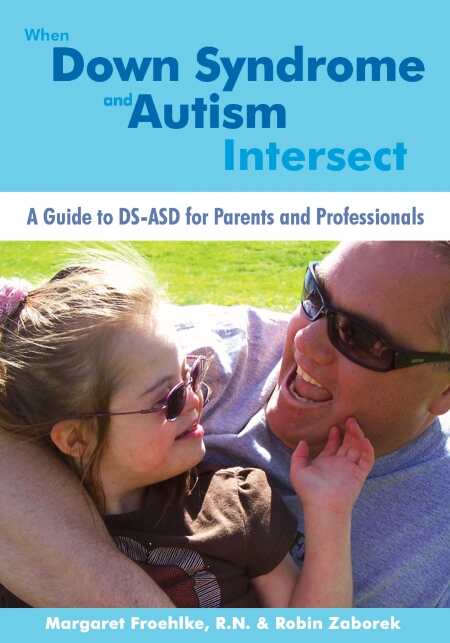When Down Syndrome and Autism Intersect
A Guide to DS-ASD for Parents and Professionals
Many helpful books have been written about Down syndrome, and also about autism, but this incredibly useful guide for parents and professionals is one of the first to describe the unique challenges that come with a child who is diagnosed with both.
Written by Margaret Froehlke and Robin Zaborek, two mothers who have children with Down syndrome and autism, this important guide brings together the insight of several contributors, including other parents who have dealt with these issues as well as professionals in pediatric medicine, psychology, and public policy.
In their introduction, Froehlke and Zaborek write that many parents who pick up this book may have already suspected autism in their child with Down syndrome. Getting a confirmed diagnosis is likely to make parents feel like their lives have been turned upside down again. Each author begins with her personal story, detailing the difficult medical journeys toward diagnosis as well as the sadness, fear, and frustration that came up along the way. Froehlke and Zaborek also both felt relief, however, because an autism diagnosis can provide a framework for pursuing subsequent therapies and care.
This comprehensive guide is likely to shepherd others toward that point as well, since the information presented is detailed, comprehensive, and useful. After covering some of the genetics of Down syndrome and autism spectrum disorder (DS-ASD), the book delves into how parents and health care providers can work together in the best interest of the child. The authors also stress the importance of care coordination in social service and educational settings.
Well written and straightforward, each chapter covers a particular issue—such as sleep, problem behaviors, and life planning—with a combination of advice and recommended resources. The strategies here are practical, with a nod toward helping parents feel that they can approach each issue step by step. Also of value are sections designed for professionals who work with children with DS-ASD and their parents, particularly multicultural families who have unique needs.
An excellent chapter on oral health care is written by David Tesini and Kristi Seibel, dentists who have experience working with children who have DS-ASD. Those with Down syndrome have unique dental needs, since jaw structure is distinctive and there can be issues in retention of primary teeth for longer than is typical. Children with autism often have certain food sensitivities that can lead to enamel loss. Taking all of these challenges into consideration is important when choosing a dentist, the contributors note. They provide a vital guide for parents and dentists to make appointments easier and more effective.
With such clear and well-presented information, Froehlke and Zaborek provide more than strategies; they also offer comfort and community. They write that their goal is to enable “our loved ones to live healthy, safe, and joyful lives,” and they do an outstanding job providing the tools, information, and resources to help other families do the same.
Reviewed by
Elizabeth Millard
Disclosure: This article is not an endorsement, but a review. The publisher of this book provided free copies of the book and paid a small fee to have their book reviewed by a professional reviewer. Foreword Reviews and Clarion Reviews make no guarantee that the publisher will receive a positive review. Foreword Magazine, Inc. is disclosing this in accordance with the Federal Trade Commission’s 16 CFR, Part 255.

